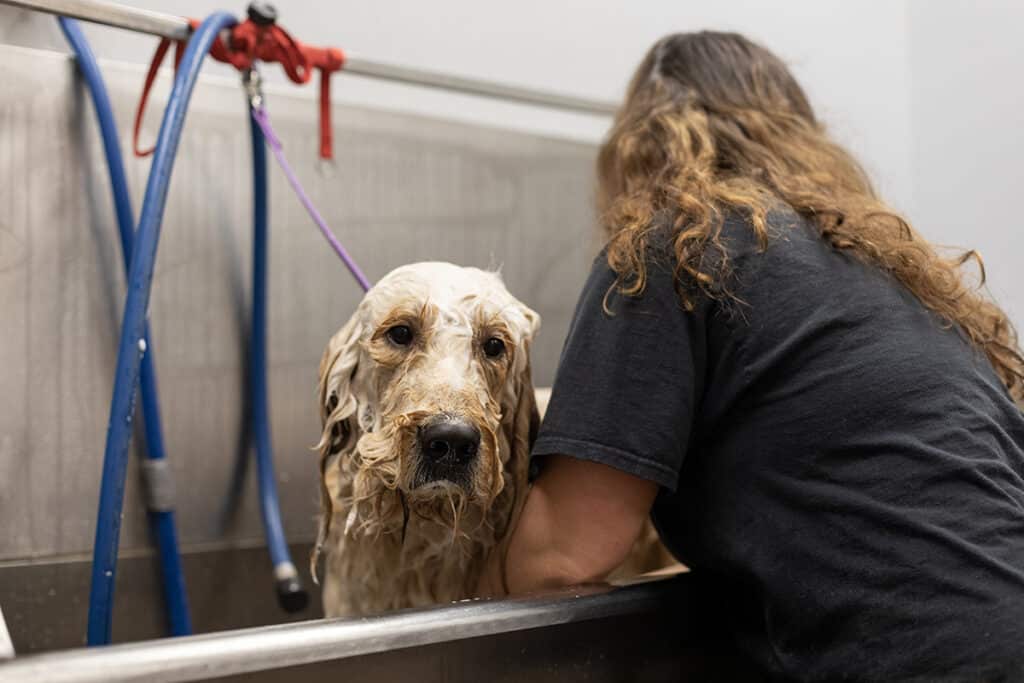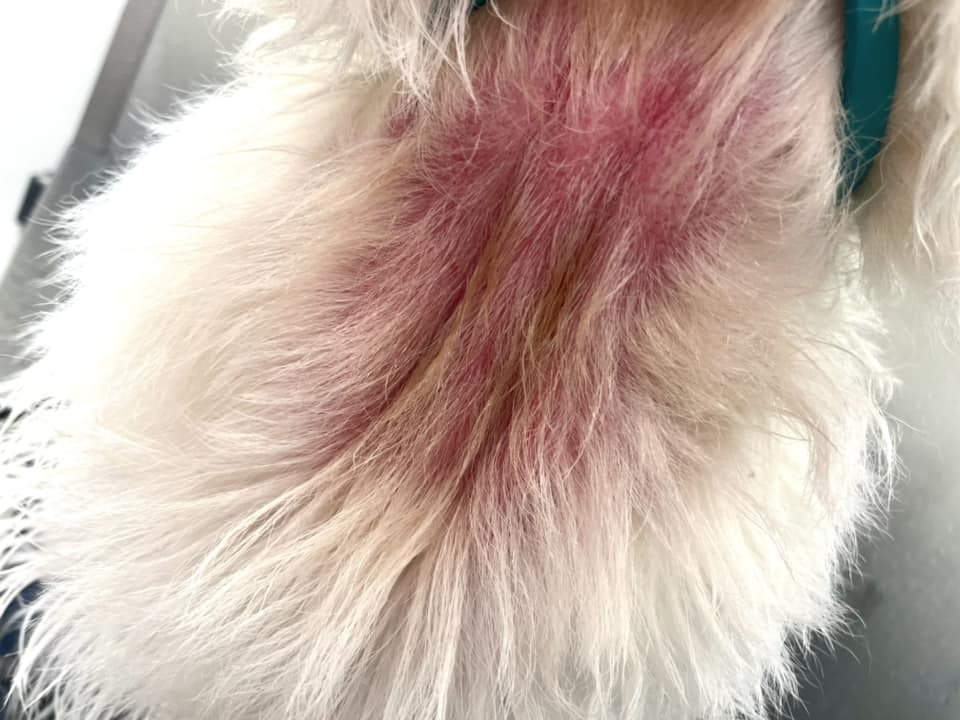Understanding your pet’s ailments and symptoms can be confusing and intimidating. It’s important for pet owners to learn about conditions their pet may develop along with causes, prevention and treatments available. With proper care, you can help prevent your pet from the pain and irritation of hot spots, along with saving yourself time and money investing in veterinary care if unpleasant hot spots arise.
This blog provides helpful information and advice to help dog owners learn proper steps to ward off pesky hot spots and treat them if they emerge.
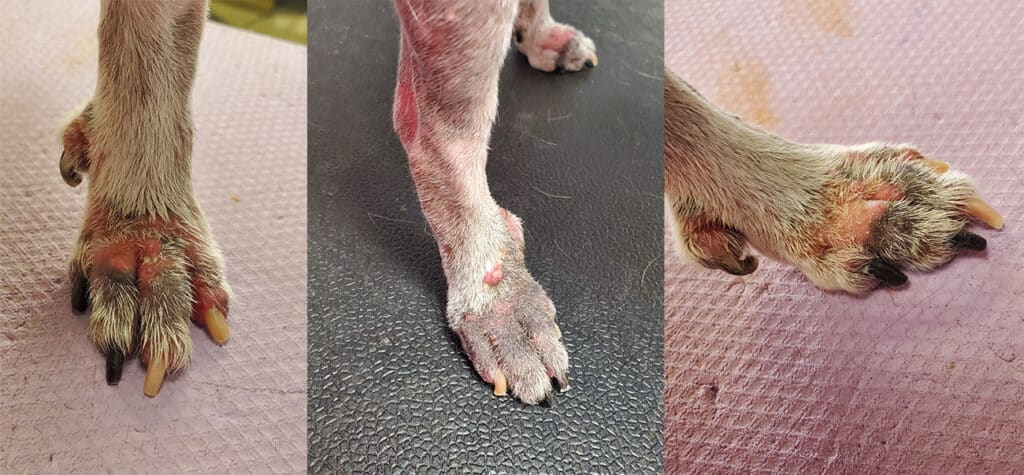
The beginning stages of hot spots developing on dog paws.
What is a Hot Spot?
Hot spots, also known as summer sores or acute moist dermatitis, are fairly common and present as red, oozing, wet sores. They can be extremely painful and itchy and are typically hot to the touch.
They most often result from a dog causing self harm by excessive chewing, licking or scratching at the skin. If a dog penetrates their skin, bacteria can set up an infection and manifest as sores on their body. If your dog continues scratching, bacteria under its nails is introduced to the sore allowing the sore to grow and become more irritating for your pet.
Hot spots can develop anywhere on a dog’s body, but are most commonly found on the neck, face and legs. They can grow rapidly but can also be treated and healed quickly. If left untreated, hot spots may lead to widespread infection and skin ulcers.
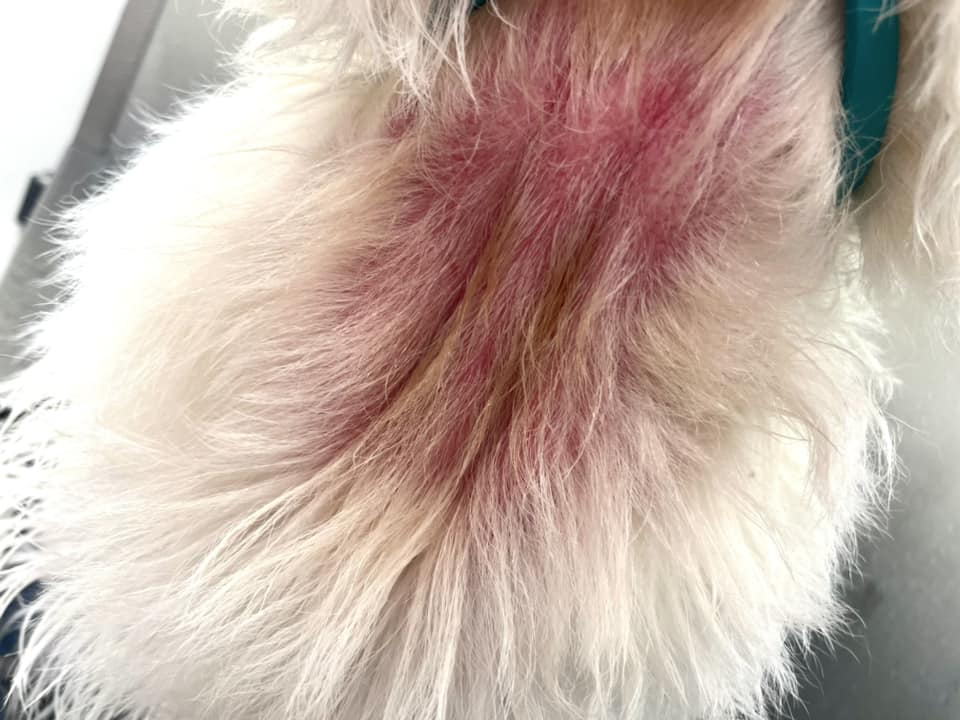
Conditions that Lead to Dog Hot Spots
Bacteria thrive in moist environments, so infections are more likely to occur in hot summer months with humid weather or after your dog goes for a swim or is exposed to rain. A lack of grooming and matted fur can also cause hot spots to occur.
Hot spots often develop due to an underlying condition that leads to licking and scratching. Such conditions include allergies, parasites, poor nutrition and anal gland impaction. Boredom and anxiety can also lead to licking and scratching.
The more a pet scratches an area, the more bacteria is introduced. Licking is especially problematic, as it creates a moist warm environment for bacteria to grow.
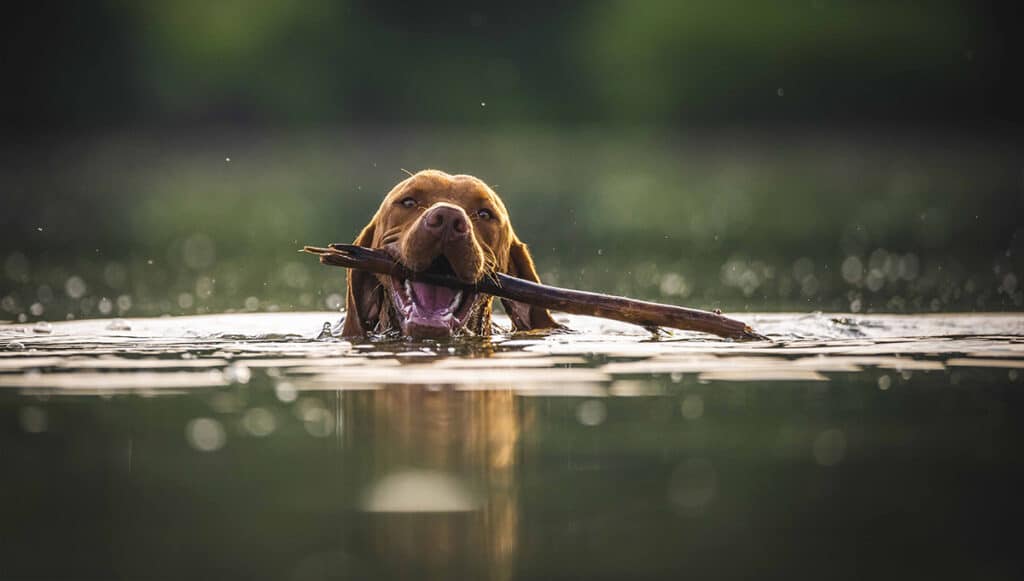
Most Susceptible Breeds
Any breed can be affected by hot spots, but they most often affect dogs with dense undercoats such as Labrador Retrievers, German Shepherds, Golden Retrievers, Saint Bernards and Collies.
If you have a dog with a thick undercoat, we recommend getting them groomed by a professional groomer at minimum every 4-6 weeks throughout the summer months. This will ensure that the dead undercoat can be fully released and the skin underneath can breathe.
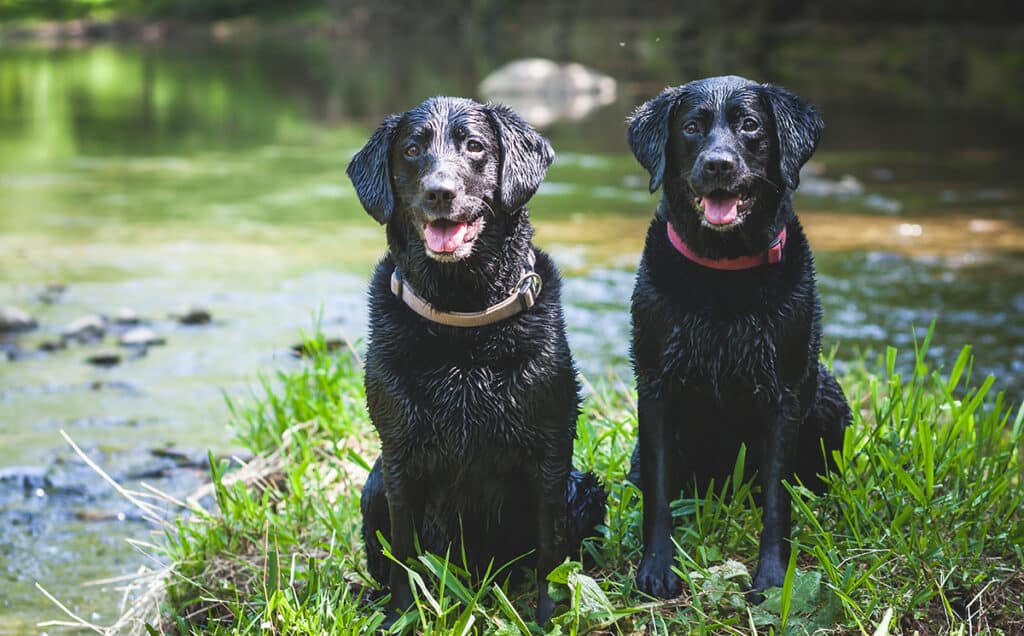
Hot Spot Prevention
Make sure to clean your dog thoroughly and remove excess dirt and moisture from your dog’s skin and coat after swimming or exposure to rain.
Ensure your pet is on a flea and tick preventative, as parasites – especially fleas – can trigger hot spots quickly.
Keep your pet groomed and clean, especially during warm weather months. Take your dog to a professional groomer to trim down their coat, and brush regularly to avoid matted fur. Matting decreases the skin’s ability to breathe, creating a hot, moist environment and breeding ground for hot spots.
Proper nutrition for your dog or cat is also important. A well-balanced diet and supplements that improve the health of the skin and coat are imperative. It’s best to do whatever you can do to keep your pet as clean and healthy as possible; a healthy animal on the inside is a healthy animal on the outside.
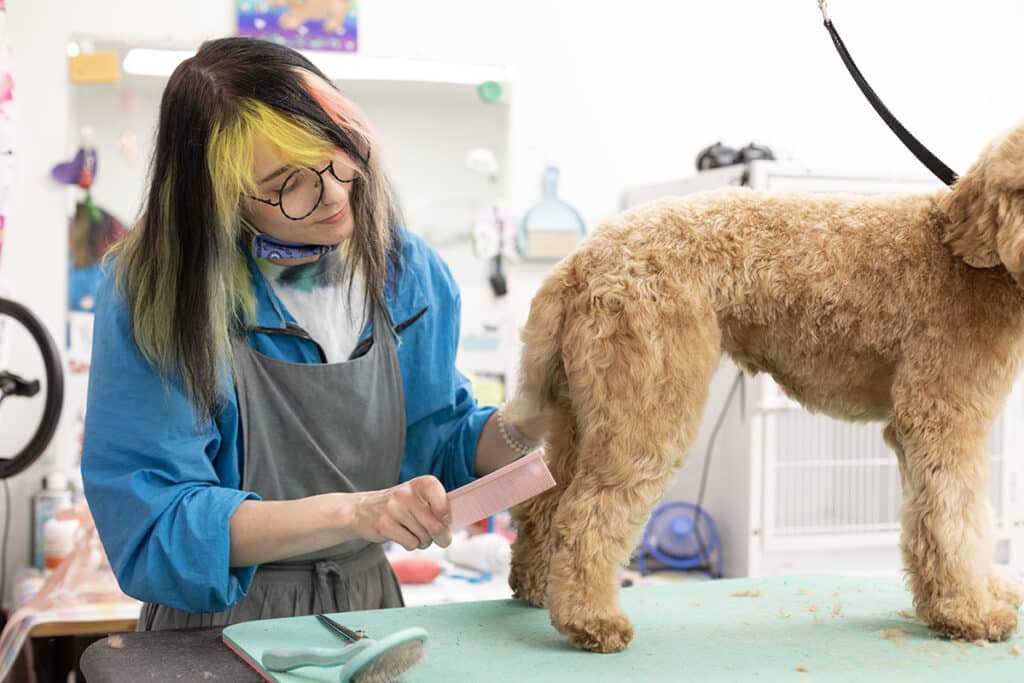
How to Treat a Hot Spot
Small hot spots can typically be treated at home, however finding the underlying cause is important to prevent further occurrences. To determine the cause, a trip to the vet may be necessary, especially if the spot is extremely large and obviously painful.
Urgent vet care may be required if the spot is:
- Drastically increasing in size
- Bleeding continuously
- Any colored discharge appears
If any of these have occurred, transport to a veterinarian as soon as possible to prevent further infection. A topical treatment and/or oral medications may be prescribed to speed up the recovery process.
Your vet may also clip the hair away from the area to ensure air can circulate freely around the area to speed up the healing process. They may also prescribe the use of antiseptic spray, specialized shampoo or mild, water-based astringent to be used at home. Occasionally, pets need an antibiotic as well if the infection has spread.
Home Remedies for Hot Spots
If the hot spot seems minor, there are some things you can do at home to help.
Trim around the affected areas so the skin may breath and dry out. Do not use scissors; clippers with a clean clipper blade are a necessity. If you are not comfortable with this, your local groomer can help.
Prevent your pet from licking or scratching the area by placing a collar around their neck. An E-collar, or “cone of shame” can help. If your dog will not leave the area alone, this may be the only way to prevent it from licking.
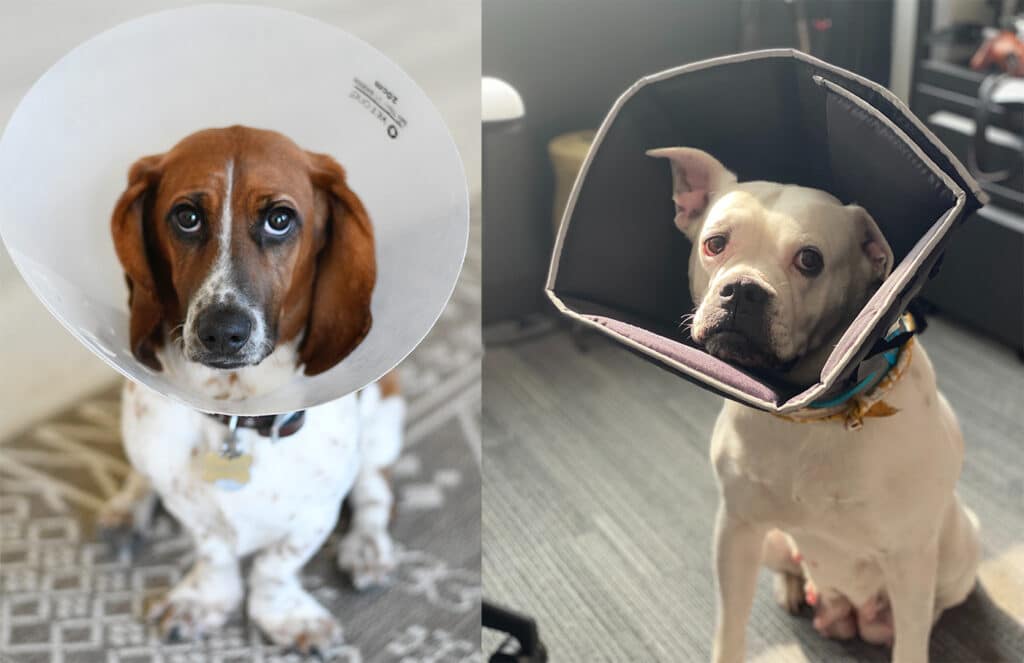
Another, perhaps more comfortable option would be to try an inflatable collar. They’re designed for dogs with an injury or recent surgery. If you want to try an inflatable collar, observe your pet carefully to ensure it cannot reach the areas that need to heal.
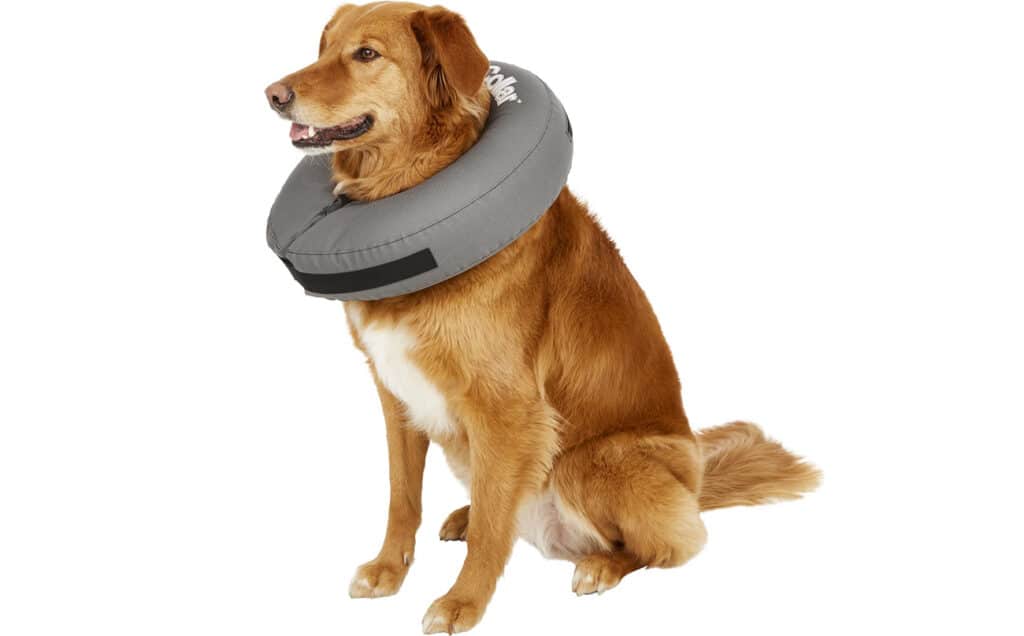
Clean the area with a mild antiseptic spray, antibacterial shampoo or antiseptic wipes. Human medications, such as antibiotic creams and hydrocortisone creams should not be used as they tend to make the dog lick more. You want them to stop licking, not lick more.
After consulting with your veterinarian, apply recommended hot spot spray that is safe to be ingested as your dog will likely lick the area. Monitor the area for improvement or worsening of the symptoms. If symptoms worsen, seek veterinary care as soon as possible.
How can my Groomer Help?
Regular grooming plays a huge role in the health of your pet’s skin. Ensuring the areas of irritation are cleaned and maintained properly can avoid issues in the future. If your pet does develop a hot spot, most groomers have products or services that can help get them under control.
At Smoochie Pooch, we offer tailored skin restoration programs to assist in the healing process. Our ozone bubble baths offer another layer of healing and protection with healing properties, such as anti inflammatory, anti viral, and antibacterial. Contact your local Smoochie Pooch salon to learn more about our skin restoration program or schedule your consultation today.
